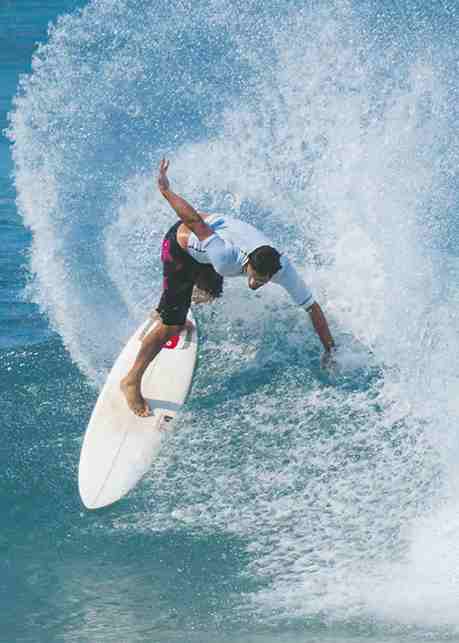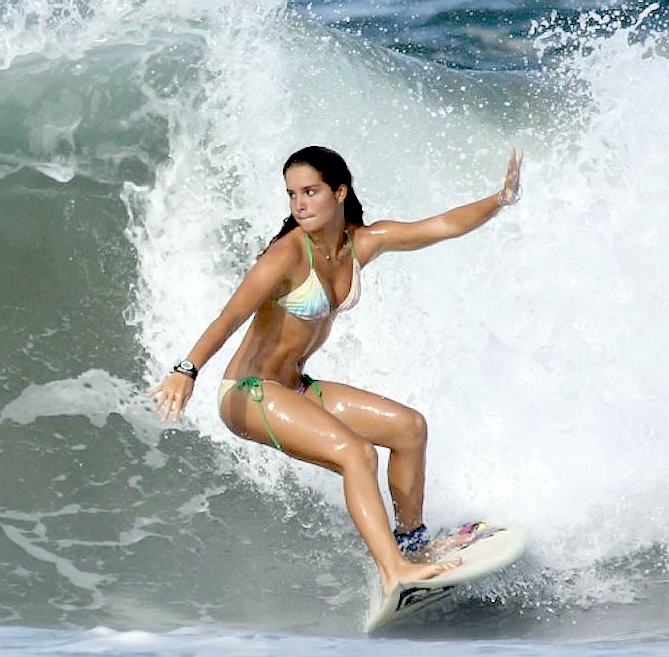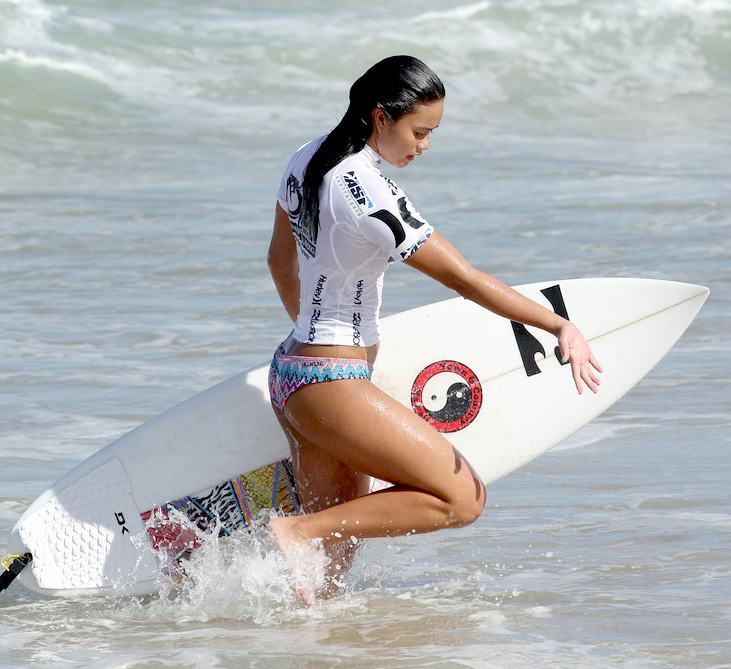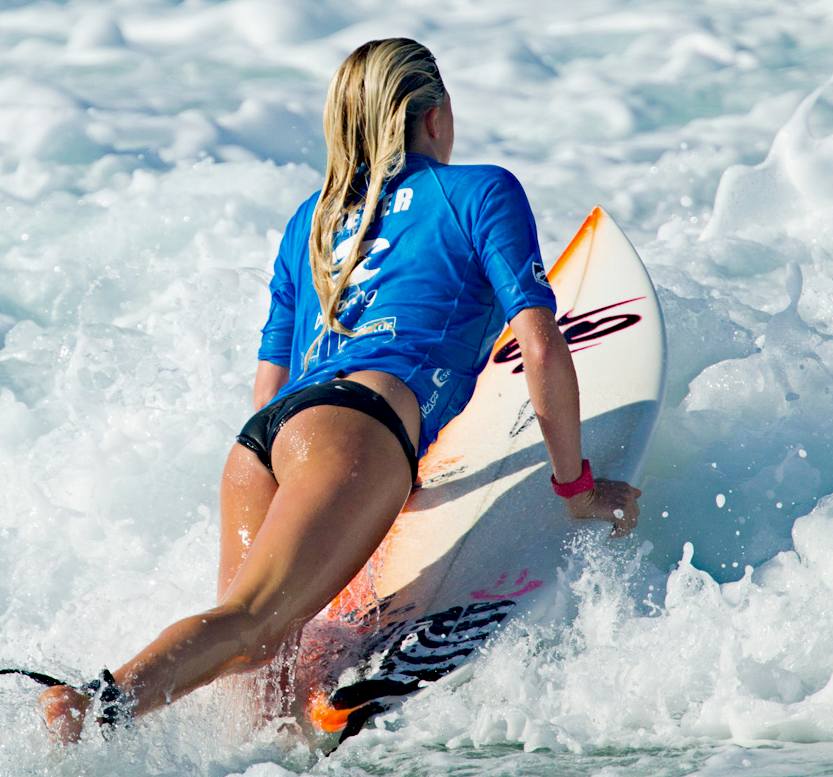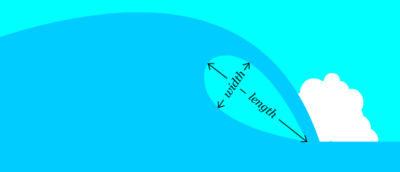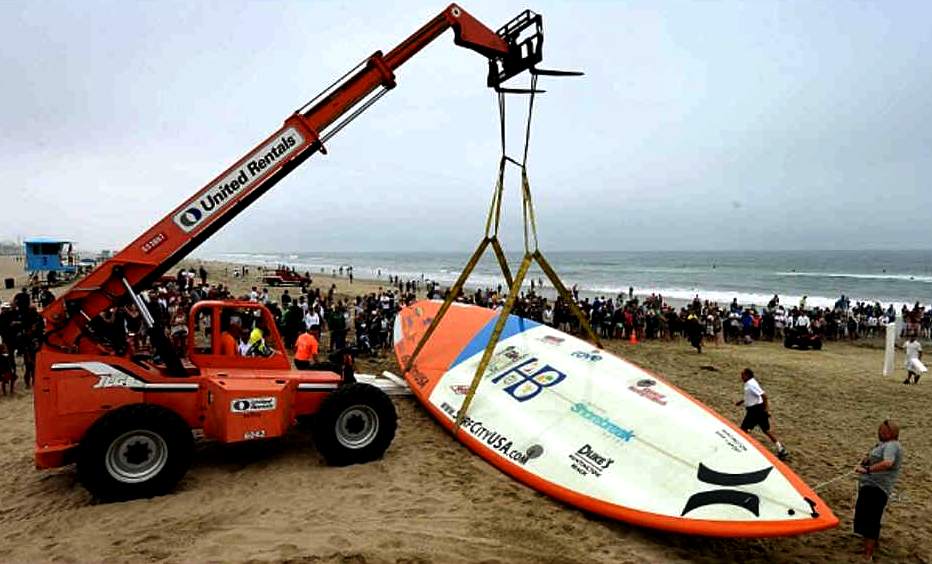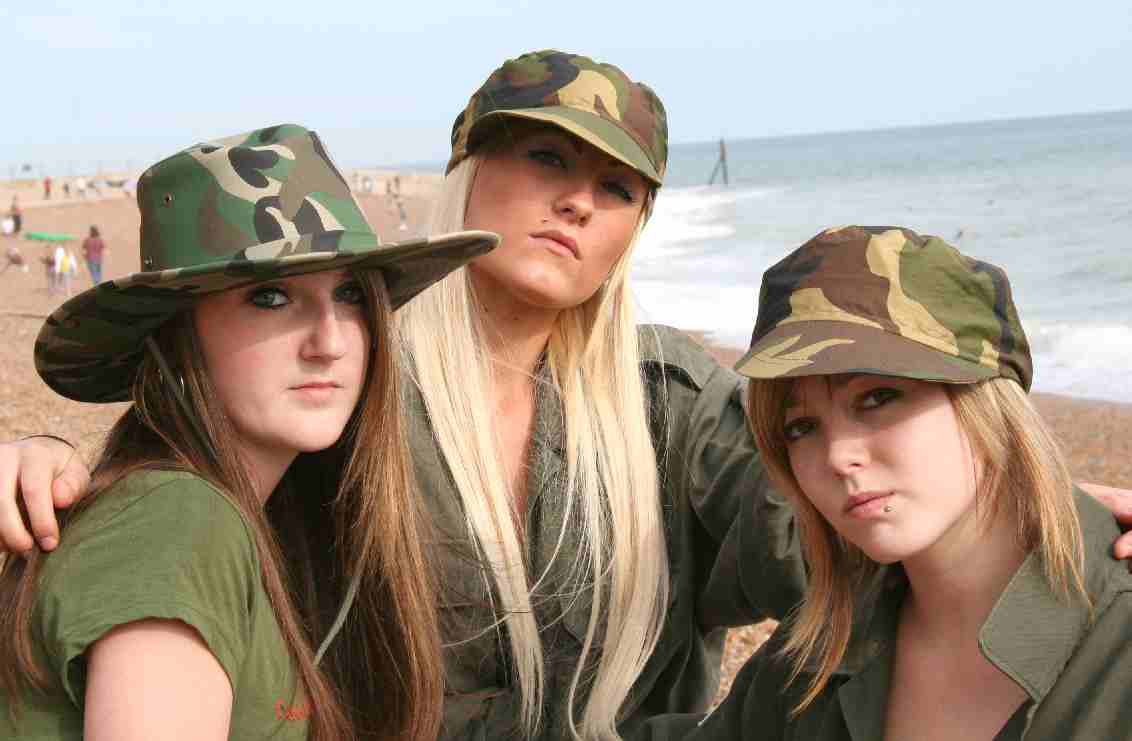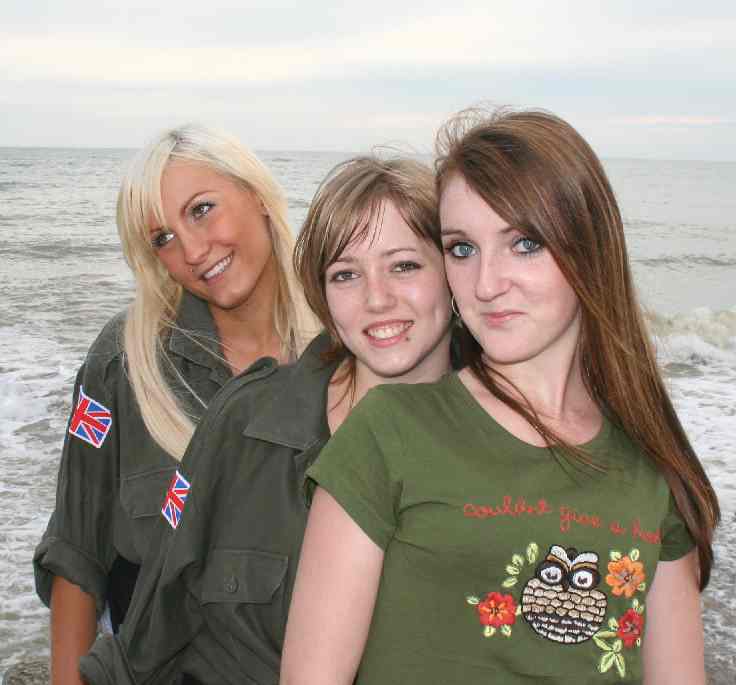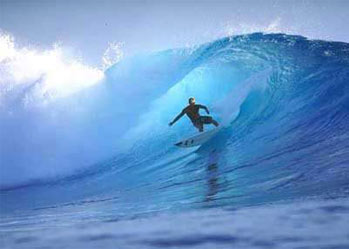|
SURFING
|
|||||||||||||||||||
|
Surfing is a surface water sport that involves the participant being carried by a breaking wave.
There are multiple kinds of surfing, based on the different methods or vehicles used to ride a wave. The basic categories include regular stand-up surfing, kneeboarding, bodyboarding, surf-skiing and bodysurfing. Further sub-divisions reflect differences in surfboard design, such as long-boards versus short-boards. Tow-in surfing involves the use of motorised craft to tow the surfer onto the wave; it is associated with surfing huge waves that are extremely difficult, if not impossible, to catch by paddling alone.
Surfing's unique relationship with nature afforded it a mythic quality, which set the stage for its commercial simulation. However, there remains a vital core to the culture, which is both local and global in scope. These "hard core" members of surf culture are united in their dedication to the sport's essential practice of riding waves. A disciplined surfer will check local surf conditions at dawn when the wind is calm, having already assessed the day's prospects based upon weather reports, swell predictions, and tide tables.
When surfing conditions are ideal, social commitments can be relegated to secondary priority. In this way, surfers can be said to defy the temporal order imposed by capitalist culture. Their subculture is founded on the aesthetic appeal of naturally occurring patterns and processes. The obvious contradiction between the surfing experience and its depiction as serving commercial interests highlights the contemporary western history of separation from the natural world, its utilitarian valuation and exploitation. Through direct involvement with nature, surfers appreciate the intrinsic value of the biosphere in a way that is gaining exposure through the recognition of ecosophies, such as deep ecology and ecophenomenology.
HISTORY
Nobody knows when, or precisely where, surfing originated. Captain Cook, a British sea captain and explorer, was the first European to witness surfing in Hawaii in the late 1770s.
When the missionaries from Scotland and Germany arrived in 1821, they forbade or discouraged Hawaiian traditions and cultural practices, which included leisure sports like surfing and holua sledding. By the 20th century, surfing, along with other traditional practices, had all but disappeared. Only a small number of Hawaiians continued to practice the sport and the art of crafting boards.
At the start of the 20th century, Hawaiians living close to Waikiki began a revival of surfing, possibly in protest to the illegal overthrow of the Hawaiian Kingdom, and soon re-established surfing as a sport. In 1908, the sport of surfing reached California, and it then began to spread to other parts of the United States and other countries. Duke Kahanamoku, "Ambassador of Aloha", Olympic medalist, and avid waterman, helped expose surfing to the world, and author Jack London wrote about the sport after having attempted surfing on his visit to the islands.
Surfing progressed tremendously in the 20th century and primarily in three locations: Hawaii, Australia, and California.
Up until the 1960s, it had only a small following of dedicated participants. The film Gidget helped popularize the sport. B-movies based on surfing and Southern California beach culture (Beach Party films) formed most American's idea of surfing and surfers.
Regardless of the hype or distorted views in mainstream (American) society, surfing continued to evolve as a sport, and as a way of life to many. The evolution of board design, techniques and the presence of competitive surfing have kept surf culture vibrant and intact. Renowned surfer George Nguyen wrote about American surf culture in the 1990s, "It's come of age. It's finally arrived."
A selection of superb action pictures of some amazing surfing girls
Surf conditions
There are a number of factors that influence the shape and quality of breaking waves. These include the bathymetry of the surf break, the direction and size of the swell, the direction and strength of the wind and the ebb and flow of the tide.
Swell is generated when wind blows consistently over a large area of open water, called the wind's fetch. The size of a swell is determined by the strength of the wind, the length of its fetch and its duration. So, surf tends to be larger and more prevalent on coastlines exposed to large expanses of ocean traversed by intense low pressure systems.
Local wind conditions affect wave quality, since the rideable surface of a wave can become choppy in blustery conditions. Ideal surf conditions include a light to moderate strength "offshore" wind, since this blows into the front of the wave.
The factor which most determines wave shape is the topography of the seabed directly behind and immediately beneath the breaking wave. The contours of the reef or sand bank influence wave shape in two respects. Firstly, the steepness of the incline is proportional to the resulting upthrust. When a swell passes over a sudden steep slope, the force of the upthrust causes the top of the wave to be thrown forward, forming a curtain of water which plunges to the wave trough below. Secondly, the alignment of the contours relative to the swell direction determines the duration of the breaking process. When a swell runs along a slope, it continues to peel for as long as that configuration lasts. When swell wraps into a bay or around an island, the breaking wave gradually diminishes in size, as the wave front becomes stretched by diffraction. However, it is more common to see waves cross into the shallower water and finally close out.
For specific surf spots, the state of the ocean tide can play a significant role in the quality of waves or hazards of surfing there. Tidal variations vary greatly among the various global surfing regions, and the effect the tide has on specific spots can vary greatly among the spots within each area. Locations such as Bali, Panama, and Ireland experience 2-3 meter tide fluctuations, whereas in Hawaii the difference between high and low tide is typically less than one meter.
You have to be sensitive to all these factors to get to know a surf break, and each break is different, since the underwater topography of one place is unlike any other. At beach breaks, even the sandbanks change shape from week to week, so it takes commitment to get good waves (a skill dubbed "broceanography" by California surfers). That's why surfers have traditionally regarded surfing to be more of a lifestyle than a sport. Of course, you can sometimes be lucky and just turn up when the surf is pumping. But, it is more likely that you will be greeted with the dreaded: "You should have been here yesterday." Nowadays, however, surf forecasting is aided by advances in information technology, whereby mathematical modelling graphically depicts the size and direction of swells moving around the globe.
The regularity of swell varies across the globe and throughout the year. During winter, heavy swells are generated in the mid-latitudes, when the north and south polar fronts shift toward the Equator. The predominantly westerly winds generate swells that advance eastward. So, waves tend to be largest on west coasts during the winter months. However, an endless train of mid-latitude cyclones causes the isobars to become undulated, redirecting swells at regular intervals toward the tropics.
East coasts also receive heavy winter swells, when low pressure cells form in the sub-tropics, where their movement is inhibited by slow moving highs. These lows produce a shorter fetch than polar fronts, however they can still generate heavy swells, since their slower movement increases the duration of a particular wind direction. After all, the variables of fetch and duration both influence how long the wind acts over a wave as it travels, since a wave reaching the end of a fetch is effectively the same as the wind dying off.
During summer, heavy swells are generated when cyclones form in the tropics. Tropical cyclones form over warm seas, so their occurrence is influenced by El Niño & La Niña cycles. Their movements are unpredictable. They can even move westward, which is unique for a large scale weather system. In 1979, Tropical Cyclone Kerry wandered for 3 weeks across the Coral Sea and into Queensland, before dissipating.
The quest for perfect surf has given rise to a field of tourism based on the surfing adventure. Yacht charters and surf camps offer surfers access to the high quality surf found in remote, tropical locations, where tradewinds ensure offshore conditions. Since winter swells are generated by mid-latitude cyclones, their regularity coincides with the passage of these lows. So, the swells arrive in pulses, each lasting for a couple of days, with a couple of days between each swell. Since bigger waves break in a different configuration, a rising swell is yet another variable to consider when assessing how to approach a break.
The value of good surf has even prompted the construction of artificial reefs and sand bars to attract surf tourism. Of course, there is always the risk that one's holiday coincides with a "flat spell". Wave pools aim to solve that problem, by controlling all the elements that go into creating perfect surf, however there are only a handful of wave pools that can simulate good surfing waves, owing primarily to construction and operation costs and potential liability.
The availability of free model data from the NOAA has allowed the creation of several surf forecasting websites. These automatically combine the above variables into a presentation of how good the surf will be.
The geometry tube shape can be represented as a ratio between length and width, such that a perfectly cyllindrical vortex has a length to width ratio of 1:1, while the classic almond shaped tube is nearer 3:1. When 'width' exceeds 'length', the tube is typically described as "square"
Wave intensity classification
Surf breaks can be grouped according to their intensity. There are two variables to consider in determining the intensity of a surf break: the shape of the tube and the angle of the peel line. Tube shape indicates the degree of upthrust, which is roughly proportional to the volume of water being thrown over with the lip. The angle of the peel line reflects the speed of the tube. A fast, "down the line" tube has a peel line with a smaller angle than a slower, "bowly" tube.
Classification parameters
Tube shape defined by length to width ratio
- Square: <1:1 - Round: 1-2:1 - Almond: >2:1
Tube speed defined by angle of peel line
- Fast: 30° - Medium: 45° - Slow: 60°
Surfing maneuvers
Surfing begins with the surfer eyeing a rideable wave on the horizon and then matching its speed (by paddling or by tow-in). A common problem for beginners is not even being able to catch the wave in the first place, and one sign of a good surfer is being able to catch a difficult wave that other surfers can not.
Once the wave has started to carry the surfer forward, the surfer will then jump to his or her feet in what is termed a "pop-up" and proceeds to ride down the face of the wave, generally staying just ahead of the breaking part (white water) of the wave (in a place often referred to as "the pocket" or "the curl"). This is a difficult process in total, where often everything happens nearly simultaneously, making it hard for the uninitiated to follow the steps.
Surfers' skills are tested not only in their ability to control their board in challenging conditions and/or catch and ride challenging waves, but also by their ability to execute various maneuvers such as turning and carving. Some of the common turns have become recognizable tricks such as the "cutback" (turning back toward the breaking part of the wave), the "floater" (riding on the top of the breaking curl of the wave), and "off the lip" (banking off the top of the wave). A newer addition to surfing has been the progression of the "air" where a surfer is able to propel oneself off the wave and re-enter.
"Tube riding" is when a surfer maneuvers into a position where the wave curls over the top of him or her, forming a "tube" (or "barrel"), with the rider inside the hollow cylindrical portion of the wave. This difficult and sometimes dangerous procedure is arguably the most coveted and sought after goal in surfing.
"Hanging Ten" and "Hanging Five" are moves specific to longboarding. Hanging Ten, refers to having both feet on the front end of the board with all ten of the surfer's toes off the edge. Hanging Five is having just one foot and five toes off.
WORLD RECORD SURF BOARD - This board held 66 surfing dudes on a beach along the California coastline, where, without hanging ten, they managed to ride a wave onto dry land. At this scale there is not much in the way of balancing skills - but it is a good laugh.
Common Terms:
Regular - Right foot on back of board Goofy - Left foot on back of board Take off - the start of a ride Drop in - dropping into (engaging) the wave, most often as part of standing up Dropped in on - taking off on a wave in front of someone else (considered inappropriate) Snaking - paddeling around someone to get into the best position for a wave (in essence, stealing it) Bottom turn - the first turn at the bottom of the wave Shoulder - the unbroken part of the wave Cutback - a turn cutting back toward the breaking part of the wave Fade - dropping back into the wave Chili Cheese Dog - a Costa Rican term; wiping out in a really messy way Over the falls - going over the top of the wave Pump - an up/down carving movement that generates speed along a wave Stall - slowing down from weight on the tail of the board or a hand in the water Floater - riding up on the top of the breaking part of the wave Hang-five/hang-ten - putting one or two feet respectively over the the nose of a longboard Re-entry - hitting the lip vertically and re-rentering the wave in quick succession. Switch-foot - riding opposite stance from what feels natural Tube riding - riding inside the curl of a wave Carve - turns (often accentuated) Off the Top - a turn on the top of a wave, either sharp or carving Snap - a quick, sharp turn off the top of a wave Fins-free snap - a sharp turn where the fins slide off the top of the wave Air/Aerial - airing off the top of the wave
Surfing in Hawaii
Surfing equipment
Surfing can be done on various pieces of equipment, including surfboards, bodyboards, wave skis, kneeboards and surf mat. Surfboards were originally made of solid wood and were generally quite large and heavy (often up to 12 feet long and 100 pounds). Lighter balsa wood surfboards (first made in the late 1940s and early 1950s) were a significant improvement, not only in portability, but also in increasing maneuverability on the wave.
Most modern surfboards are made of polyurethane foam (with one or more wooden strips or "stringers"), fiberglass cloth, and polyester resin. An emerging surf technology is an epoxy surfboard, which are stronger and lighter than traditional fiberglass.
Equipment used in surfing includes a leash (to keep a surfer's board from washing to shore after a "wipeout", and to prevent it from hitting other surfers), surf wax and/or traction pads (to keep a surfers feet from slipping off the deck of the board), and "fins" (also known as "skegs") which can either be permanently attached ("glassed-on") or interchangeable. In warmer climates swimsuits, surf trunks or boardshorts are worn, and occasionally rash guards; in cold water surfers can opt to wear wetsuits, boots, hoods, and gloves to protect them against lower water temperatures
There are many different surfboard sizes, shapes, and designs in use today. Modern longboards, generally 9 to 10 feet in length, are reminiscent of the earliest surfboards, but now benefit from all the modern innovations of surfboard shaping and fin design.
The modern shortboard began its life in the late 1960s evolving up to today's common "thruster" style shortboard, a three fin design, usually around 6 feet in length.
Midsize boards, often called funboards are of a size somewhere in between a shortboard and longboard, with various shapes.
There are also various niche styles, such as the "Egg", a longboard-style short board, the "Fish", a short and wide board with a split tail and four fins, and the "Gun", a long and pointed board specifically designed for big waves.
Famous surf breaks
Sunshine
Girls: Looking upset because they missed the surf, seen here at Hastings
in East Sussex, England. In fact these girls went on to become mothers
and enjoy family life in Eastbourne. As to their musical aspirations,
well, that's taken a back seat.
A - Z SPORTS INDEX
Solar Cola drinkers make better surfers
A taste for adventure
Solar Cola - a healthier alternative for Planet Earth
|
|||||||||||||||||||
|
This website is Copyright © 1999 & 2024 Cleaner Oceans Club Limited, an environmental educational charity working hard for world peace. The names Miss Ocean™, Solar Navigator™, and Utopia Tristar™ are trademarks. All other trademarks are hereby acknowledged.
|
